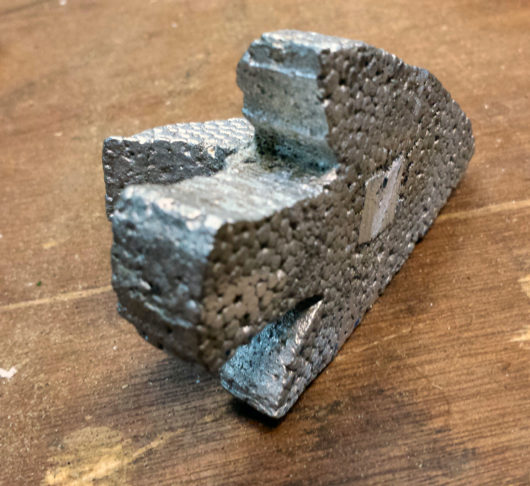The Definitive Guide for Stahl Specialty Company
The Definitive Guide for Stahl Specialty Company
Blog Article
Things about Stahl Specialty Company
Table of ContentsThe Basic Principles Of Stahl Specialty Company Some Of Stahl Specialty CompanyAll About Stahl Specialty CompanyLittle Known Questions About Stahl Specialty Company.Our Stahl Specialty Company Statements
The refined difference lies in the chemical content. Chemical Comparison of Cast Light weight aluminum Alloys Silicon advertises castability by minimizing the alloy's melting temperature level and boosting fluidity during spreading. It plays a crucial function in enabling elaborate molds to be loaded accurately. Additionally, silicon adds to the alloy's toughness and wear resistance, making it valuable in applications where resilience is essential, such as vehicle components and engine elements.It likewise enhances the machinability of the alloy, making it much easier to refine into finished items. By doing this, iron adds to the general workability of light weight aluminum alloys. Copper increases electric conductivity, making it useful in electric applications. It likewise boosts corrosion resistance and includes to the alloy's total stamina.
Manganese adds to the toughness of light weight aluminum alloys and improves workability. It is generally utilized in wrought light weight aluminum items like sheets, extrusions, and profiles. The existence of manganese aids in the alloy's formability and resistance to breaking throughout fabrication processes. Magnesium is a lightweight aspect that provides strength and impact resistance to aluminum alloys.
Zinc boosts the castability of light weight aluminum alloys and aids regulate the solidification process during spreading. It boosts the alloy's stamina and firmness.
The Greatest Guide To Stahl Specialty Company
Due to the fact that aluminum-silicon alloys have excellent spreading properties, high gas buildings, basic processes, and exceptional rust resistance, aluminum-silicon alloys are most typically utilized in the die-casting industry in your home and abroad. At the same time, aluminum-silicon alloys are likewise reasonably very early and widely acknowledged alloys developed and used in die-casting. After continual research and enhancement, a lot of the existing worldwide mainstream aluminum-silicon alloys have actually been completed and are absolutely nothing even more than A356, A360, A380, ADC12, B390, and A413.
The primary thermal conductivity, tensile strength, yield stamina, and prolongation vary. Amongst the above alloys, A356 has the highest possible thermal conductivity, and A380 and ADC12 have the lowest.

The Single Strategy To Use For Stahl Specialty Company
In precision casting, 6063 is well-suited for applications where complex geometries and top quality surface area coatings are paramount. Instances consist of telecommunication enclosures, where the alloy's exceptional formability permits smooth and cosmetically pleasing designs while maintaining structural honesty. In the Illumination Solutions sector, precision-cast 6063 parts produce sophisticated and effective illumination components that require elaborate shapes and great thermal performance.
(https://www.bitchute.com/channel/CXjDol1cuosT)
It results in a better surface finish and better deterioration resistance in A360. The A360 displays superior elongation, making it optimal for complex and thin-walled components. In accuracy spreading applications, A360 is appropriate for industries such as Customer Electronics, Telecommunication, and Power Tools. aluminum foundry. Its improved fluidness enables intricate, high-precision components like smart device cases and communication tool housings.

In accuracy casting, aluminum 413 shines in the Consumer Electronic Devices and Power Tools industries. It's frequently used to craft intricate elements like mobile phone real estates, video camera bodies, and power device coverings. Its precision is amazing, with limited tolerances as much as 0.01 mm, making sure remarkable item assembly. This alloy's exceptional corrosion resistance makes it an excellent option for outdoor applications, guaranteeing resilient, long lasting products in the discussed markets.
Stahl Specialty Company for Beginners
When you have determined that the aluminum pass away casting process is appropriate for your task, a vital following action is determining on one of the most suitable alloy. The light weight aluminum alloy you pick will substantially influence both the spreading procedure and the buildings of the final item. As a result of this, you must make your choice very carefully and take an enlightened approach.
Establishing one of the most ideal aluminum alloy for your application will certainly mean evaluating a large variety of qualities. These comparative alloy attributes comply with the North American Pass Away Casting Association's standards, and we've split them right into 2 categories. Aluminum Castings. The very first classification addresses alloy characteristics that influence the production process. The 2nd covers attributes affecting the residential or commercial properties of the end product.
The alloy you select for die casting straight influences a number of elements of the casting process, like just how easy the alloy is to collaborate with and if it is prone to casting defects. Hot splitting, additionally called solidification breaking, is a regular die spreading defect for aluminum alloys that can cause inner or surface-level tears or splits.
Stahl Specialty Company for Dummies
Particular light weight aluminum alloys are extra susceptible to warm breaking than others, and your option should consider this. aluminum foundry. It can damage both the cast and the die, so you need to look for alloys with high anti-soldering residential or commercial properties.
Rust resistance, which is already a noteworthy attribute of aluminum, can vary substantially from alloy to alloy and is a crucial characteristic to take into consideration relying on the environmental problems your product will certainly be subjected to. Put on resistance is an additional building commonly sought in light weight aluminum products and can distinguish some alloys.
Report this page